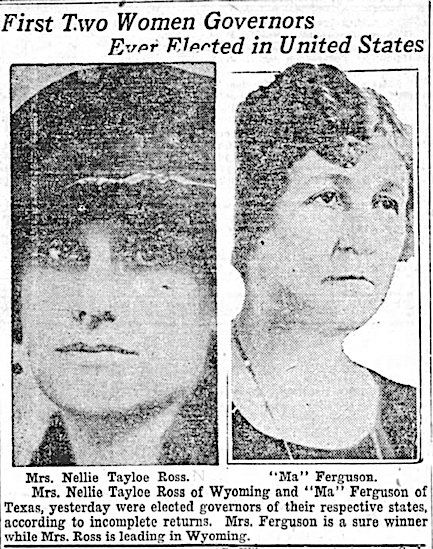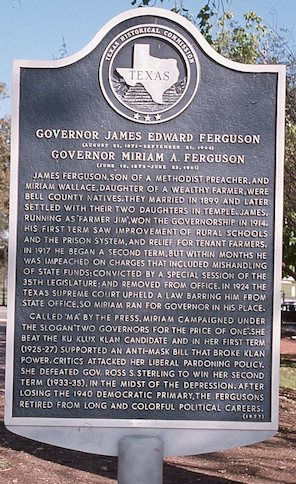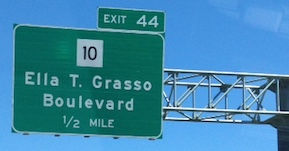No longer a "novelty"
- Penny Colman
- Nov 15, 2022
- 4 min read
The election of Kathy Hochul, the first woman to be elected as governor of New York, and that a record number of women—12—will serve as governors in 2023 promoted me to think about women governors. Who was first?
As you can see in the first image that appeared inThe Omaha World Herald ("First Two Women Governors Ever Elected in United States," November 16, 1924, p. 3), two women were elected in 1924, both Democrats—Nellie Tayloe Ross in Wyoming and Miriam "Ma" Ferguson in Texas. Both were succeeding their husbands. Ross was elected to fill the vacancy left by the death of her husband. Ferguson was elected as a surrogate for her husband who was impeached and ban from holding a state office. Inaugurated on January 5, 1925, fifteen days before Miriam Ferguson, forty-nine-year old Nellie Tayloe Ross, the mother of three children, gets credit as the first woman governor.

Two months after her inauguration, in March, Nellie Tayloe Ross, dressed in mourning clothes and accompanied by her 12-year-old son, attended a governors' convention in Portland, Maine. A reporter described her entrance at breakfast: "She arrived just later enough for breakfast for her entrance to be an occasion. All the other Governors and families and the chief justice . . .were seated and had got through cantaloupe to oatmeal when somebody near the door stood up and cheered. Then everybody stood up and cheered and Governor Nellie entered like a bride or a football hero."

Although she lost a close election for a second term, Ross had become a national political figure. An article by journalist Emma Bugbee* with the headline "Nellie Tayloe Ross Becomes Leader of Democratic Women in Rapid Rise" appeared in a Helena, Montana, newspaper (The Helena Daily Independent, August 8, 1928, p. 15). In 1933, President Franklin Delano Roosevelt appointed Nellie Tayloe Ross the first woman director of the Federal Mint, the bureau that produces coinage for the United States. An effective administrator, Nellie Tayloe Ross retired twenty years later in 1953 and died in 1977 at the age of 101.**
Second image: Great Falls Tribune (Great Falls, Montana,) April 29, 1933, p. 2.
Miriam "Ma" Ferguson served two terms as a surrogate for her husband. The plaque below that I photographed in Austin, Texas, notes that in 1924,"Miriam campaigned under the slogan "two Governors for the price of one." She beat the Ku Klux Klan candidate and in her first term (1925-27) supported an anti-mask bill that broke Klan power." She and her husband retired after her second term (1933-1935).
The third woman governor—Lurleen Wallace was elected as a surrogate for her husband George who was prevented by the Alabama constitution from running for reelection. She died of cancer after serving as governor for fifteen months— Jan.1967-May 1968.

The fourth woman governor, Ella Grasso, was a "novelty." Elected by a landslide as Connecticut's 83rd governor n 1974. Ella Grasso, a Democrat, was the first woman elected in her own right., or, as she said, she was "the first lady governor who was not a governor's first lady."
(The photo below was taken while on a women's history road trip northbound on I-95 through New Haven, Connecticut.)

Diagnosed with cancer, Ella Grasso resigned on December 31, 1980, near the end of her second term, writing: "I make this decision with a heavy heart but with full appreciation that the people's business must continue at the highest level . . . All of my life has been one of dedication to working for people." She died on February 5, 1981 a the age of 61.
Ella Grasso never lost an election: In succession she served as a state legislature, the secretary of state, a member of the U.S. House of Representative, and governor. She began her political career as a member of the League of Women Voters, the nonpartisan successor organization to the National American Woman Suffrage Association (NAWSA). Carrie Chapman Catt, the president of NAWSA, had proposed formation of the LWV dedicated to the education of women citizens. At NAWSA's 1920 "Victory Convention," Catt devoted time to organizing state chapters of LWV. In my book, The Vote, I quoted an excerpt from her presidential address at that Fifty-first Annual and final Convention (dating back to its creation in 1869 and the presidency of Susan B. Anthony): "Our cause," Catt declared, "has been a cause to live for, a cause to die for if need be. It has been a movement with a soul, a dauntless, unconquerable soul every leading onward." In 1984, President Ronald Reagan posthumously awarded Ella Grasso the Presidential Medal of Freedom.
Here are some facts about women governors from the Center for American Women and Politics (CAWP) "History of Women Governors": https://cawp.rutgers.edu/
+46 women (28 Democrats and 18 Republicans) have served as governor in 31 states,*** plus there have been two women governors in Puerto Rico and one in Guam. Of the 46, 32 were first elected in their own right; 3 replaced their husbands, and 11 became governor by constitutional succession, six of whom subsequently won full terms.
+Kay A. Orr (R-Nebraska, 1987-1990) was the first Republican woman to be elected governor in any state and the first woman to run against another woman for a gubernatorial post.
+Arizona is the first state where a woman succeeded another woman as governor, and the first state to have five women governors.
*A suffragist and reporter, Emma Bugbee had participated in and covered the 1912 week-long, 150-mile suffrage hike in the winter from New York City to Albany, New York. She phoned her stories in after every arduous day. While writing about this and other suffrage hikes in my book The Vote: Women's Fierce Fight, I wondered—Would I/could I have done that!?.
Here is a link to hear Anna Quindlen reading an excerpt of Emma Bugbee's account of the hikers' arrival in Albany. https://www.youtube.com/watch?v=bO2CzqP-Pcw
**Here is a link to "Mrs. Money—Nellie Tayloe Ross" with a video of her speaking https://ahcwyo.org/2022/01/03/mrs-money-nellie-tayloe-ross/ )
***The 19 state without a woman governor are: Arkansas, California, Colorado, Florida, Georgia, Idaho, Illinois, Indiana, Maryland, Minnesota, Missouri, Mississippi, North Dakota, Nebraska, Pennsylvania, Tennessee, Virginia, Wisconsin, West Virginia. The 12 states with women governors in 2023 are: Alabama, Arizona, Arkansas, Iowa, Kansas, Massachusetts, Maine, Michigan, New Mexico, New York, Oregon, South Dakota.
Ella Grasso Quote Citation:
Millican, Michael W., "Ella Grasso—First Year in Office," Transcript-Telegram (Holyoke, MA), Dec. 26, 1975, p. 9.
.
Comentários